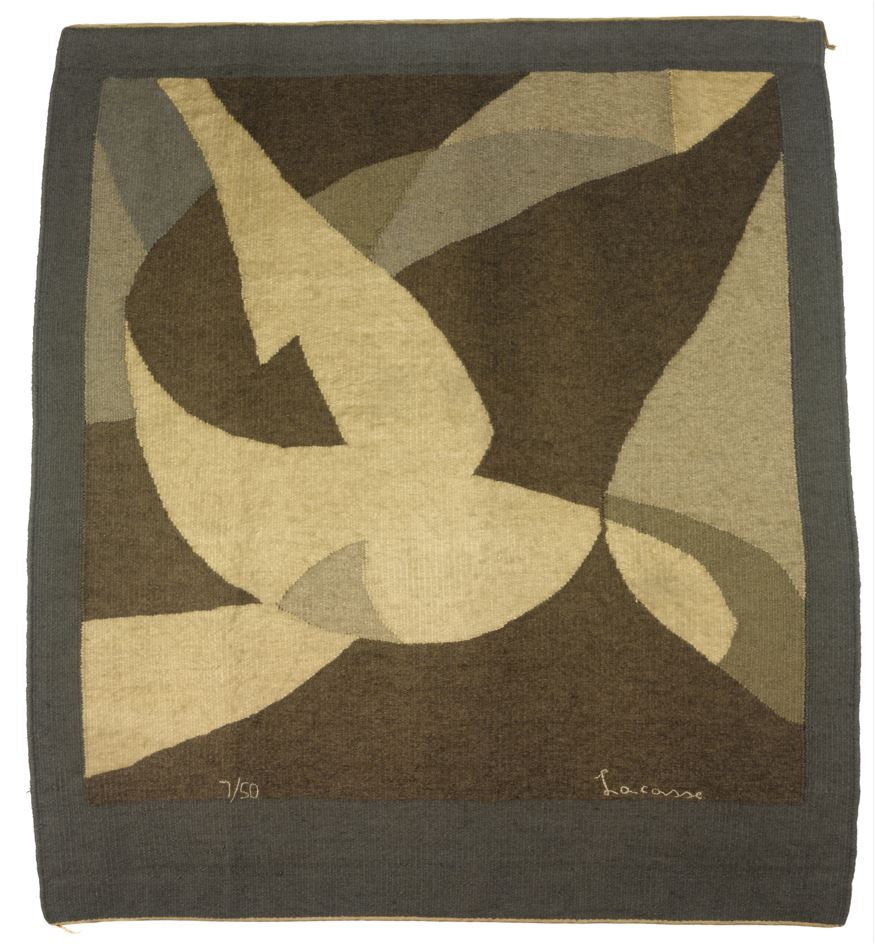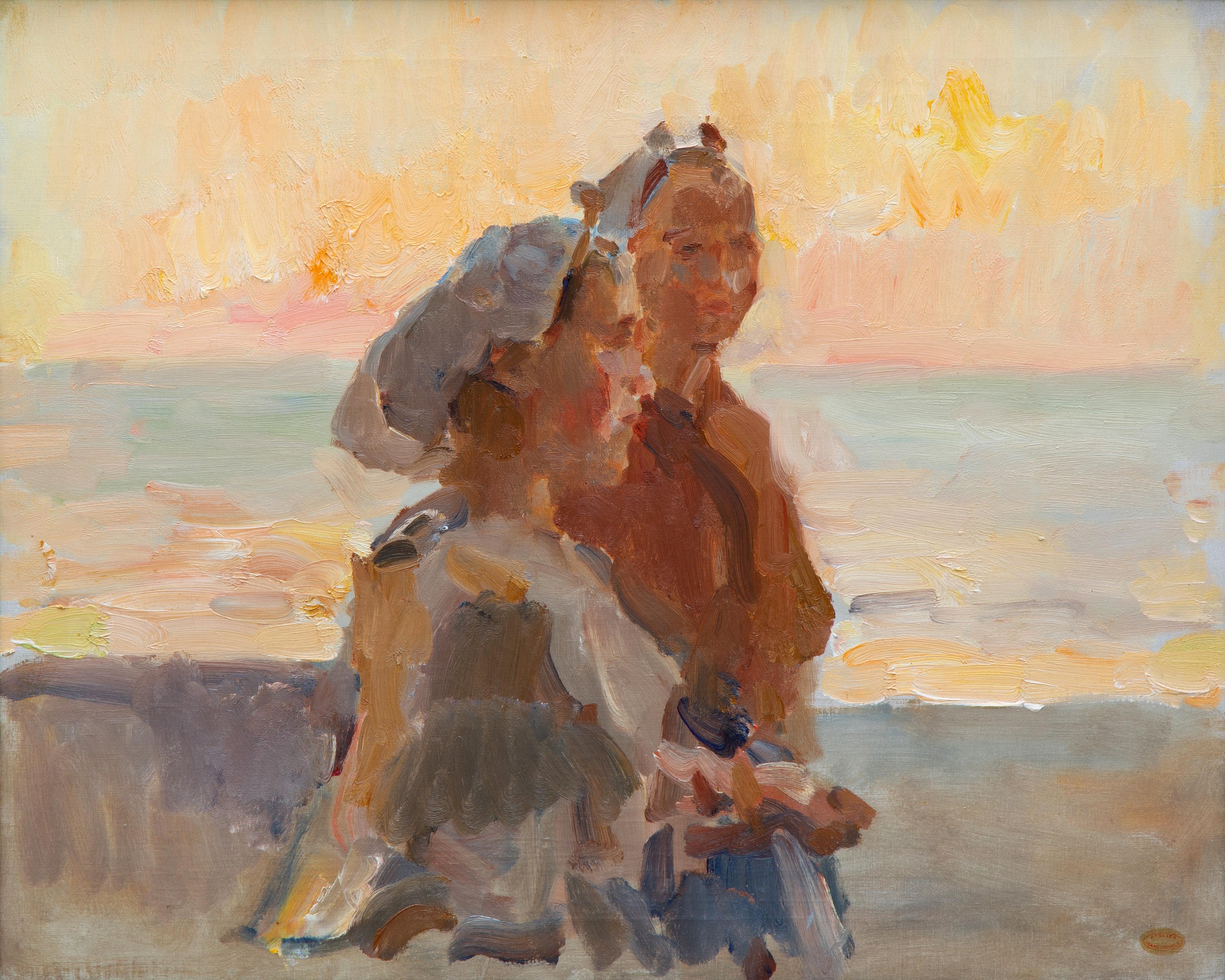
Beschrijving
With the artist's studio stamp 'Atelier Isaac Israels' (lower right)
Provenance: Auction, Marcel Diederiks, The Hague, 1989, where acquired by the present owner.
Please compare this painting to: -A sketch in pencil in the collection of the Frans Hals Museum in Haarlem. -An oil sketch in Muzee Scheveningen: ‘Twee Scheveningse dames, de vriendinnen Arendje Roeleveld en Engeltje Westerduijn’, painted in 1934. Apparently these two are the same as the fisher women in the work now in auction. -A more detailed oil painting of ‘Twee Scheveningse meisjes’ on which the girls are painted with a view on the sea, which is in the collection of the Kunstmuseum The Hague, inv.no. 0332198.
‘Sketches in Oils’ Even if the artist, Isaac Israels was initially indebted to his famous father, Jozef, he quickly showed that he possessed his very own imaginative style. This can already be seen in the works that he produced when he was just 15 or 16 years old; even back then, these look more like casual snapshots than carefully staged scenes. The developments within photography at the time definitely had an influence here, as did the technique of en plein air painting that was starting to appear in France around 1880. The often dramatic, emotive compositions that Josef Israels had so much success with, and the moody, often green-grey landscapes of the other The Hague Schoolers that Isaac grew up with in his youth, seem to be very different, very distanced from what we now consider to be typical characteristics of Isaac Israels. His interest in the human form is one thing he did share with his father; the big difference is that Isaac saw colour and light, not grief and poverty. Isaac is a painter of the mondaine society, the carefree lifestyle, with lots of colourful sparkle. Whereas his father, Jozef, focused on evoking our sentiments in his work – on the inner world – from the very start, Isaac was more focused on what was happening outside; he has an eye for movement. People in the outside world are his subjects, especially in the city, the theatre, the cafés and on the beaches. First Isaac went out onto the street to paint en plein air. Before that he used to make his sketches on paper outside, which he then translated to oil paintings in his atelier. From 1894 he started taking his easel, his brushes and paint into the city; he visited parks in London or Paris, for example the Bois de Boulogne, and he would just as easily go to the boulevard in Scheveningen as to the one in Viareggio. The plein air paintings show how Isaacs discovered how to paint sun and light, his breakthrough into an impressionistic style of painting, of which Jan Veth, an art critic and a contemporary, wrote: ‘his work is art because it has the power of almost coming alive, and none of that power is lost in the bright blonde figures of girls – it practically bursts out of his brushstrokes of bright and beautiful colours …’. Isaac himself described his impressionistic way of painting as ‘drawing in oils’. He immediately captured his impressions in oils, or as Dolf Welling put it, Israels observed aspects, not structures. Commenting on Isaacs’ preference for painting women, Dolf Welling said: ‘the female, whether in popular or elegant form, is what captivated him in particular. He used strong strokes for them or more cursory lines with fine nuances of colour, including pink and even the greys of the The Hague School’. In the lot that is on offer, we again see the virtuosity of his sketches in oils. A summer evening with the pinkish-yellow colour of the setting sun, reflected in the light blue sea. The two Scheveningen girls with almost transparent, sunlit, pinkish-red colours on their cheeks. The whole thing painted with broad, quick brushstrokes. A perfect example of Israels at his best. Sources: Anna Wagner, ‘Isaac Israels’, Venlo 1985. Dolf Welling, ‘Isaac Israels, The Sunny World of a Hague Cosmopolitan’, The Hague 1991.
Two fisher women from Scheveningen on the beach
Israels, Isaac
(Amsterdam, 2 februari 1865
-
Den Haag,
1934)
Details
- Databanknummer:
- 84980
- Lotnummer:
- -
- Advertentietype
- Archief
- Instelling:
- Venduehuis Den Haag
- Veilingdatum:
- -
- Veilingnummer:
- -
- Stad
- -
- Limietprijs
- -
- Aankoopprijs
- -
- Verkoopprijs
- -
- Hamerprijs
- -
- Status
- Verkocht
Technische details
- Kunstvorm:
- Schilder- en Tekenkunst
- Technieken:
- Olieverf
- Dragers:
- Doek
- Lengte:
- 58 cm
- Breedte:
- 68 cm
- Hoogte:
- -
- Oplage:
- -
Beschrijving
With the artist's studio stamp 'Atelier Isaac Israels' (lower right)
Provenance: Auction, Marcel Diederiks, The Hague, 1989, where acquired by the present owner.
Please compare this painting to: -A sketch in pencil in the collection of the Frans Hals Museum in Haarlem. -An oil sketch in Muzee Scheveningen: ‘Twee Scheveningse dames, de vriendinnen Arendje Roeleveld en Engeltje Westerduijn’, painted in 1934. Apparently these two are the same as the fisher women in the work now in auction. -A more detailed oil painting of ‘Twee Scheveningse meisjes’ on which the girls are painted with a view on the sea, which is in the collection of the Kunstmuseum The Hague, inv.no. 0332198.
‘Sketches in Oils’ Even if the artist, Isaac Israels was initially indebted to his famous father, Jozef, he quickly showed that he possessed his very own imaginative style. This can already be seen in the works that he produced when he was just 15 or 16 years old; even back then, these look more like casual snapshots than carefully staged scenes. The developments within photography at the time definitely had an influence here, as did the technique of en plein air painting that was starting to appear in France around 1880. The often dramatic, emotive compositions that Josef Israels had so much success with, and the moody, often green-grey landscapes of the other The Hague Schoolers that Isaac grew up with in his youth, seem to be very different, very distanced from what we now consider to be typical characteristics of Isaac Israels. His interest in the human form is one thing he did share with his father; the big difference is that Isaac saw colour and light, not grief and poverty. Isaac is a painter of the mondaine society, the carefree lifestyle, with lots of colourful sparkle. Whereas his father, Jozef, focused on evoking our sentiments in his work – on the inner world – from the very start, Isaac was more focused on what was happening outside; he has an eye for movement. People in the outside world are his subjects, especially in the city, the theatre, the cafés and on the beaches. First Isaac went out onto the street to paint en plein air. Before that he used to make his sketches on paper outside, which he then translated to oil paintings in his atelier. From 1894 he started taking his easel, his brushes and paint into the city; he visited parks in London or Paris, for example the Bois de Boulogne, and he would just as easily go to the boulevard in Scheveningen as to the one in Viareggio. The plein air paintings show how Isaacs discovered how to paint sun and light, his breakthrough into an impressionistic style of painting, of which Jan Veth, an art critic and a contemporary, wrote: ‘his work is art because it has the power of almost coming alive, and none of that power is lost in the bright blonde figures of girls – it practically bursts out of his brushstrokes of bright and beautiful colours …’. Isaac himself described his impressionistic way of painting as ‘drawing in oils’. He immediately captured his impressions in oils, or as Dolf Welling put it, Israels observed aspects, not structures. Commenting on Isaacs’ preference for painting women, Dolf Welling said: ‘the female, whether in popular or elegant form, is what captivated him in particular. He used strong strokes for them or more cursory lines with fine nuances of colour, including pink and even the greys of the The Hague School’. In the lot that is on offer, we again see the virtuosity of his sketches in oils. A summer evening with the pinkish-yellow colour of the setting sun, reflected in the light blue sea. The two Scheveningen girls with almost transparent, sunlit, pinkish-red colours on their cheeks. The whole thing painted with broad, quick brushstrokes. A perfect example of Israels at his best. Sources: Anna Wagner, ‘Isaac Israels’, Venlo 1985. Dolf Welling, ‘Isaac Israels, The Sunny World of a Hague Cosmopolitan’, The Hague 1991.
Aangeboden kunst
Een selectie uit ons kunstaanbod

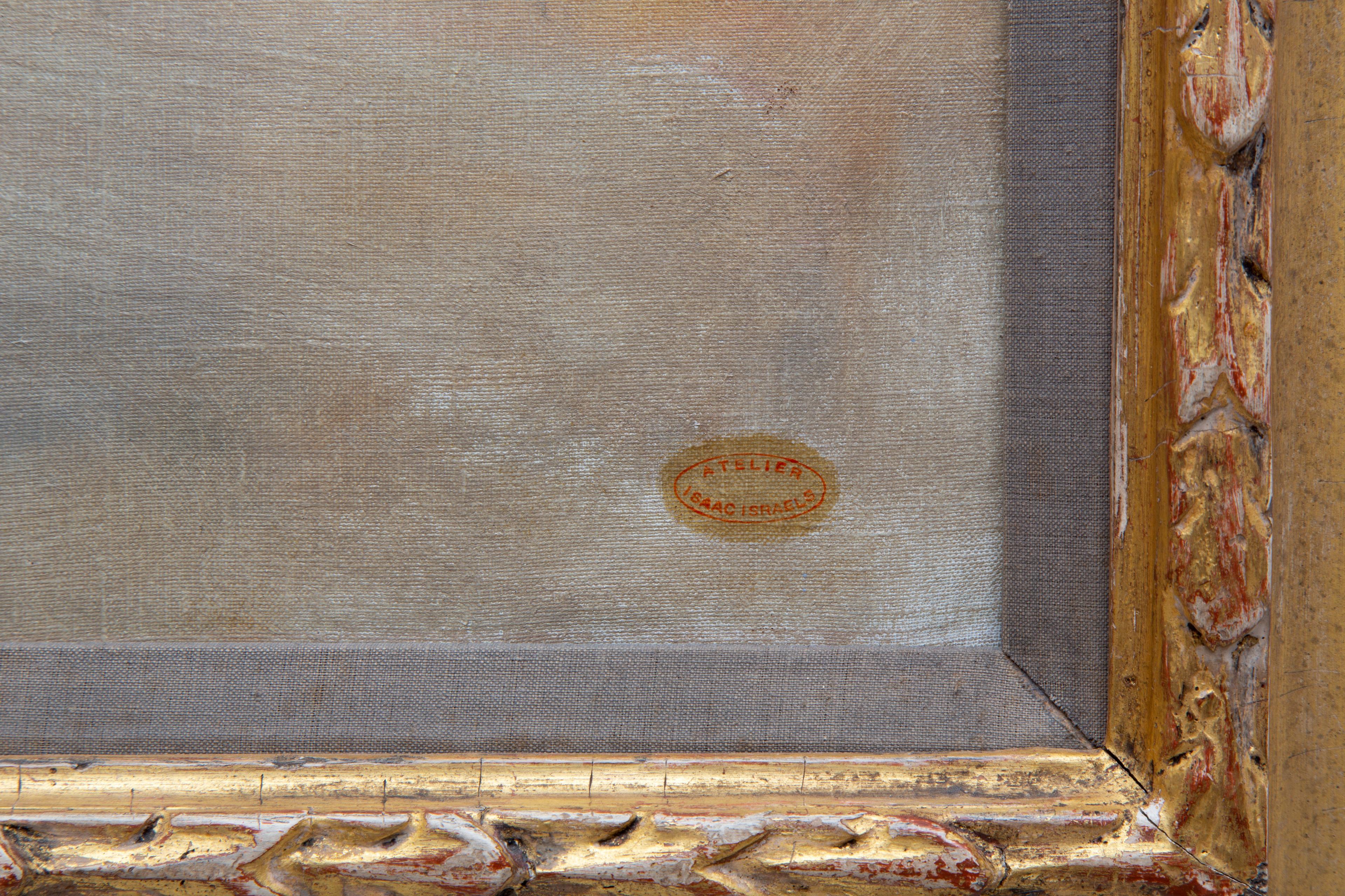
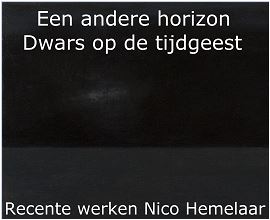
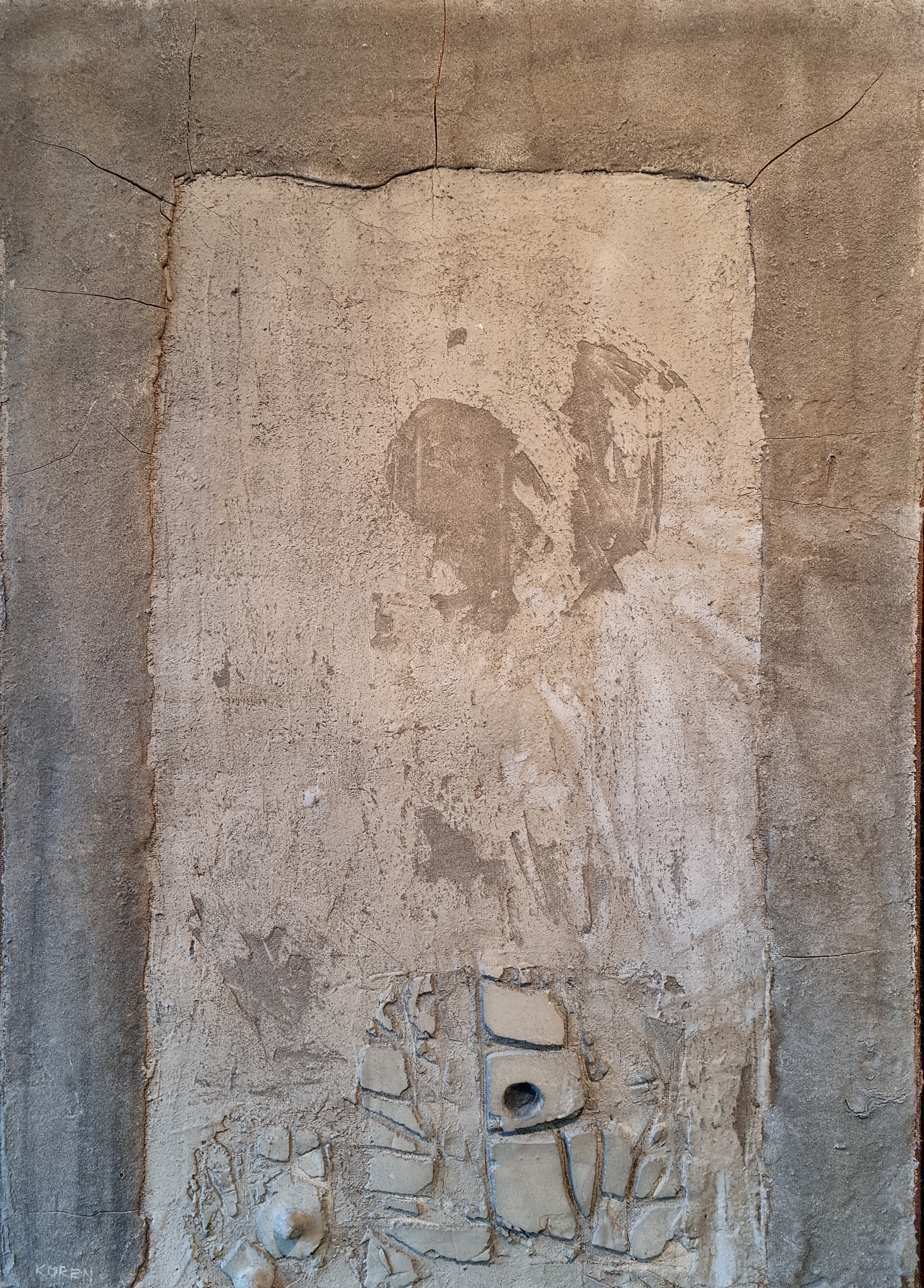
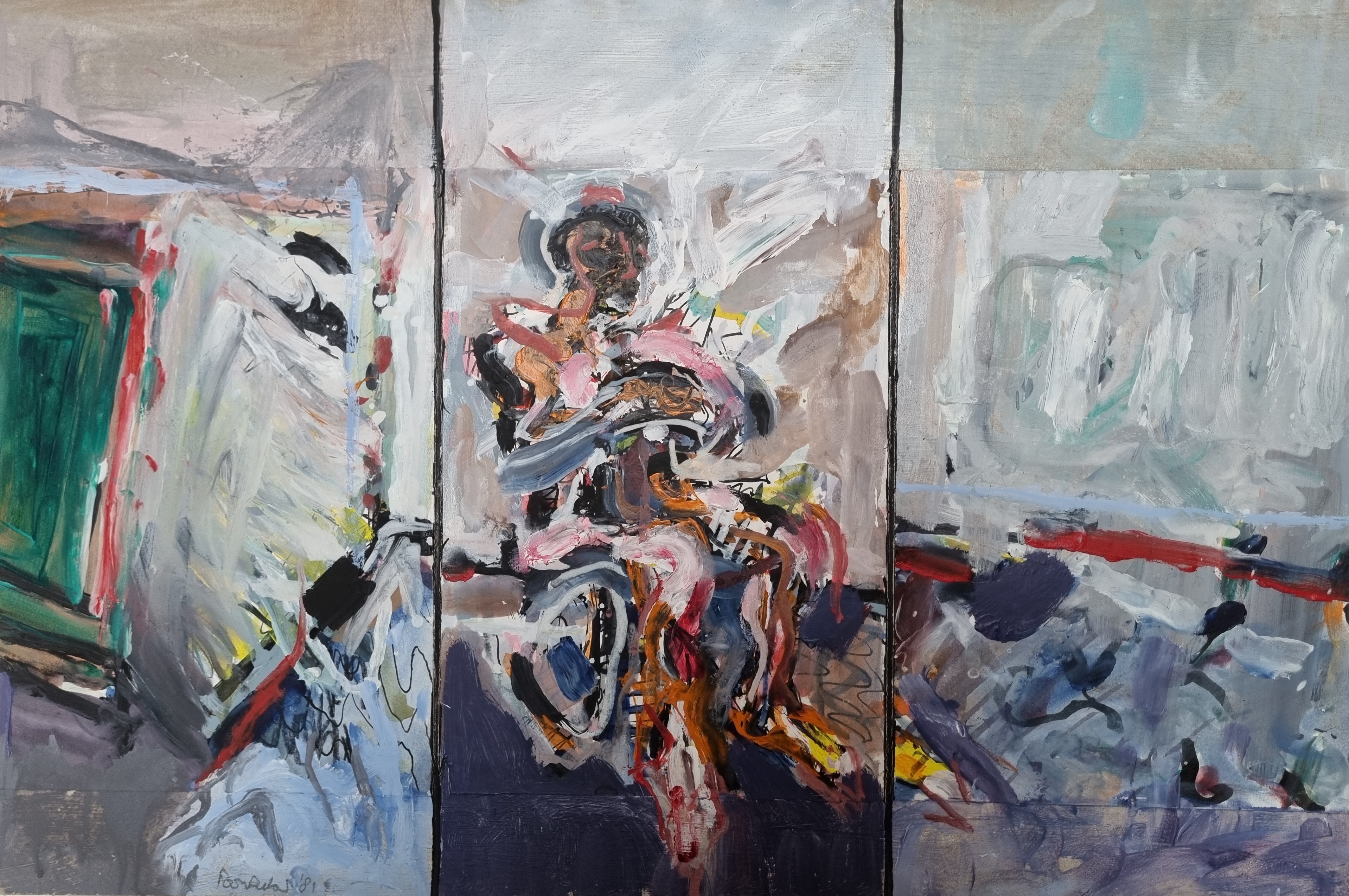
.jpg)
